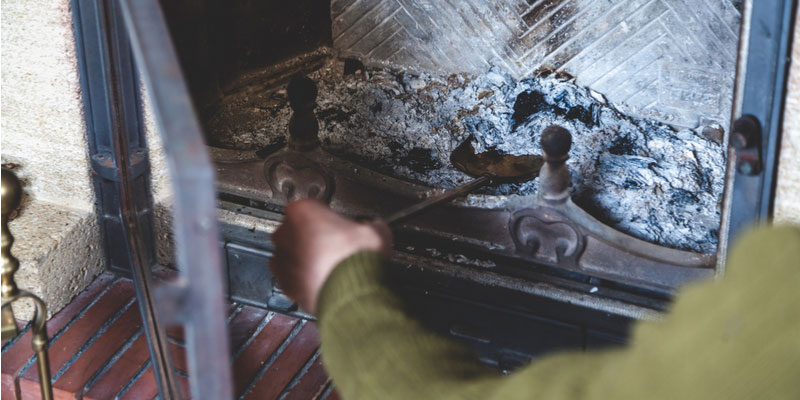You regularly hear about how to prep your fireplace for winter—the time of year it gets the most use—but what about post-winter, when your fireplace and chimney retire for the season? There are things you can do to prepare your fireplace for spring and summer, ensuring a better prepared chimney come next winter. By taking care of your fireplace in offseason, it’ll be much easier to get your fireplace up and running next fall.
1. Clean the Fireplace
At the end of the cold season it’s important to clean out your fireplace, removing any soot or debris from the chimney box. More than likely, there’s going to be a lot of it!
Important cleaning tips:
- Avoid using flammable liquids to clean fireplace brick or stone—it’s nearly impossible to remove completely and creates a fire hazard.
- Don’t use bleach, as it can cause stone and brick to fade or change color. If your cleaning fluid contains bleach, try first on a small area and wait 24-hours to see if it causes any color change.
- Dilute your cleaning solution with water. If you notice streaking, add more water.
- Make sure the fireplace is turned off and completely cool before you begin cleaning it. A fireplace should never be warm during the cleaning process.
- Before scrubbing the fireplace face, make sure to remove all ash and debris.
2. Hire a Chimney Sweep
In early summer, or at least sometime before the start of fall, hire a chimney sweep to deep clean your chimney and look for any signs of damage. Chimney sweeps remove soot and debris from your chimney, but that’s not all. They also check for issues that could otherwise turn serious and impact the overall reliability of your chimney.
3. Check the Chimney Crown
Check the tip-top of your chimney, namely the chimney crown, to ensure it is not broken and is fully protecting your chimney. Otherwise, it’s common for animals to move in and build nests. Also, moisture can seep inside your chimney and cause additional issues.
Special Instructions for Gas-Fueled Fireplaces
Gas-powered fireplaces are some of the easiest to maintain and take care of. Although, they still have special requirements before you shut them down for the warmer months.
- Shut off the fuel source connected to your fireplace by turning off the pilot. Allow your fireplace to completely cool before you move onto step 2.
- Remove the guards on the glass-face and clean off residue using a soft cloth and a cleaning solution recommended by the manufacturer.
- Use a dry cloth, vacuum, broom, etc. to clean out the remaining dust and debris.
- Look inside your fireplace once it is clean; check for cracks, rust, chips or other signs of damage. Any areas of concern? Get them inspected by a professional before using your fireplace again.
Wood-Burning Fireplaces
Wood-burning fireplaces are incredibly common and require special attention to detail. Burning wood leads to the buildup of creosol and ash, both of which lead to an increased risk of fire if not properly cleaned.
- Cover the area with a drop cloth or plastic tarp so that you don’t end up staining surrounding carpet, furnishing, etc. Also, make sure there are no hot embers still brewing inside.
- Use a shovel and metal bucket to remove remaining ash.
- Use a brisk sweep brush to remove remaining debris from the walls and firebox.
- Take a cloth to remaining soot on the glass door, as well as inside the firebox.
- Look inside the chimney using a flashlight to check for signs of damage, rust, or cracks in the flue. Pay close attention to the hearth bricks, as well as the seal around the door or glass.
- Schedule a chimney sweeping over the summer in preparation for winter.

